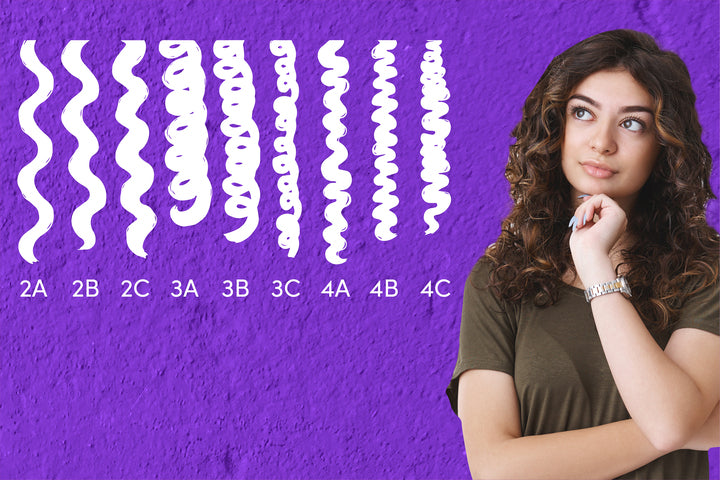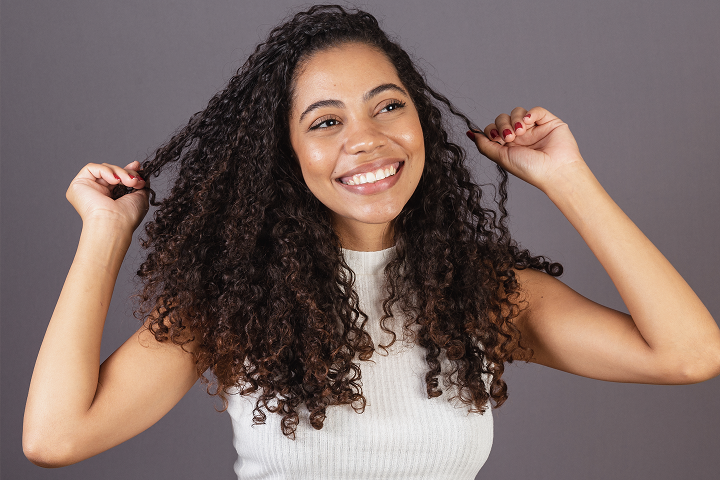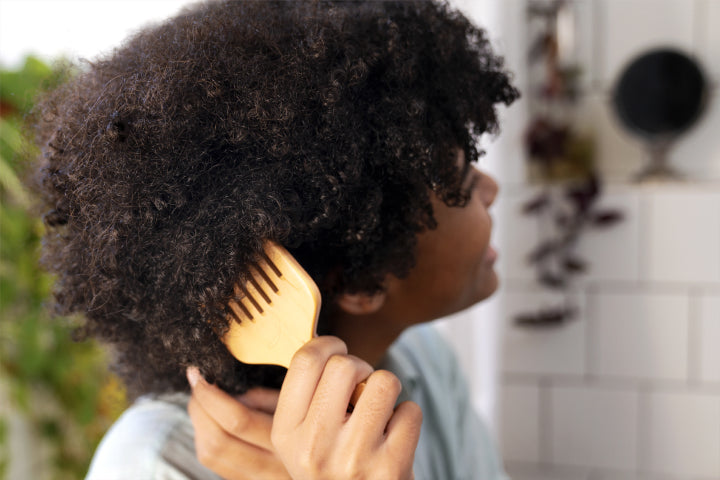When choosing natural hair curly products, it is important to understand your unique curl type.
There are 4 different hair types, namely:
Type 1: Straight
Type 2: Wavy
Type 3: Spiral
Type 4: Coiled
Out of the 4 hair types, wavy, spiral and coiled are all types of curly hair.
But even if you do understand whether you have curly hair or not, it is also important to answer the most common question, i.e. “What curl type am I?”.
Some of the curl type examples include:
- Soft waves
- Deep waves
- Soft curls
- Coiled
- Zig zag
Curl types differ based on a number of factors such as:
- Shape of the curls
- Diameter of the curls
- Curl type and porosity
- Density of the curls
Understanding your curl type is important since it can help in determining which products are meant for your hair and what is the best way to style your hair.
In this blog, we will take a look at the different types and sub-types of curly hair and determine which type of curls you have. So read on to get a deeper understanding.
Curl Type Classification: Different Types Of Curls
Curly hair comes in 3 different types, namely wavy, curly and coily. However, this is not where it ends.
For each type there are 3 distinct subtypes or subcategories. Type A is the most loose type of curl with the biggest diameter out of all 3 and Type C is the most tight curl with the smallest diameter.
Here is a deeper insight into the curl type classification:
-
Type 2: Wavy Type
Type 2 hair type also commonly known as wavy hair type is not exactly curly. It is somewhere between straight and curly hair types. It is split into 3 different subcategories namely 2A, 2B and 2C. Hair that fall in this category for ‘S’ shaped waves and are similar to loosely formed curls. The diameter of the waves is the largest among all curly hair types.
-
2A:
2A waves are loose and tousled, almost the same as straight hair. The best way to style them is to use lightweight products that enhance the wave texture and don’t hold the hair down. This gives them a natural bounce. Remember to avoid heavy products as you risk weighing down the waves that result in an untidy look and feel. Feel free to use natural hair curly products as they are free of harmful chemicals.
-
2B:
2B waves are a more tightly wound S shape. These are also loose waves but a bit tighter than the 2A type. They can hold their shape more easily than 2A as well. The best way to style type 2B hair is to use hair creams as they help define the waves better and enhance the texture. However, it is important to use one product at a time since using too many products altogether can weigh your hair down. You should use the best shampoo for curly hair to get that bounce you crave.
-
2C:
2C waves are very tight s shape waves. If your hair falls in this category, it might be prone to frizz. This can make it difficult to manage your hair. If not cared for in the right way, this hair type can look wild and unkempt. If you have this hair type, it is important to invest in a good quality sulphate free shampoo for curly hair or a CG friendly conditioner India. Look for products that offer moisture and a good hold for your hair.
-
Type 3: Curly Type
Type 3 curly hair is where you can easily point out the curls. Hair that falls in this type can range from large loops that are loosely wound to curls that look like springs. It is split into 3 different subcategories namely 3A, 3B and 3C. Type 3 curly hair begins to form their shape at the crown of your head.
-
Type 3A:
3A curls are a direct transition from the type 2 wavy hair. These curls are stretched and loose. They are larger than the other subtypes and have an enhanced definition. If you are someone with 3A type of curls, you must be aware of the frizz that comes with humidity. It may also seem to shrink in length due to moisture in the atmosphere. You should invest in natural hair curly products that offer frizz control as well as moisture control.
-
Type 3B:
3B curls can be easily wrapped around your finger or a marker. These are a wound a bit tighter than 3A curls. If you are someone with this type of hair, you must be aware that this hair type is prone to shrinkage. Best way to take care of this hair type is to keep your curls hydrated and moisturized.
-
Type 3C:
3C curls can be easily wrapped around a pencil. They are shaped as a tight corkscrew and are also known as spiral curls. They offer a fantastic amount of volume. However, if you have this type of hair, it is important to understand that these types of curls are prone to breakage and frizz. You must handle this type of hair with care and love.
-
Type 4: Coiled Type
Type 4 curls are the tightest curls out of all the curl types. This type of hair has strands that coil tightly and can be in an S- or a Z-shaped pattern. The pattern in this hair type can be observed right from the roots and the texture they carry is a dry one. They are also prone to breakage and must be handled with care.
-
Type 4A:
4A curls are shaped as tight corkscrews. These curls are a direct transition from type 3C curls. The curls have a diameter similar to that of a toothpick.
-
Type 4B:
4B curls are where the curls are even more defined and tightly wound than 4A. However the hair is fragile in this curl type and porosity is quite high. The key to maintaining this curl type is a simple mantra: hydration, hydration and hydration!
-
Type 4C:
4C curls are full of kinks and tight coils. The zig zag pattern is absolutely unmissable. These ultra-coiled curls require a lot of hydration as well as moisture as they are highly prone to frizz and dryness.
If you feel like you may have more than one curl type or a combination of multiple coil types, then there is no need to worry! It is quite common for CGs to have a mix of 2 or more than 2 curl types. The key is to treat each type uniquely to make those curls shine.
What Curl Type Am I?
To understand what curl type you are, here are a few simple tests you can conduct:
-
Wet Hair Test:
The first test is the simplest one of all. All you have to do is grab a few wet strands of your hair and lay them flat. Keep a check on them to see how they dry. If your hair starts forming S-shaped curls this means that you have a type 2 or a wavy hair type. On the other hand, if the curls are more textured and defined, you fall into the type 3 category.
-
Strand Test:
In the second test, section out a small portion of your hair and wrap it around your finger. If it forms a clear spiral or coil it means that you have curly hair. On the other hand, if your hair stays quite straight it means that you are likely in the wavy or straight hair category.
-
Hair Type (3A, 3B or 3C)
If you have type 2 or type 4 curls, you can probably decipher your curl type quite easily. This is because type 2 are wavy and loosely wound and type 4 are coils and tightly wound curls. The confusion comes up when you are a type 3 and cannot decipher what subcategory your hair falls into. To understand your type, here is a simple test you can conduct. Try to wrap a single curl around household objects of different sizes. For instance if your curls can wrap around a marker, you are a type 3B. However, if your curls fit snugly around a pencil, you are a type 3C.
-
Drying Pattern
The last test is one where you need to put your observation skills to use. Keep a close check on how your hair behaves as it dries. If it dries straight and there are no curls forming, you are definitely a Type 1. If there is a subtle curve or an “S” shape, you are in the Type 2 category. However, if you can spot a more defined curl after drying, you belong to the Type 3 category.





